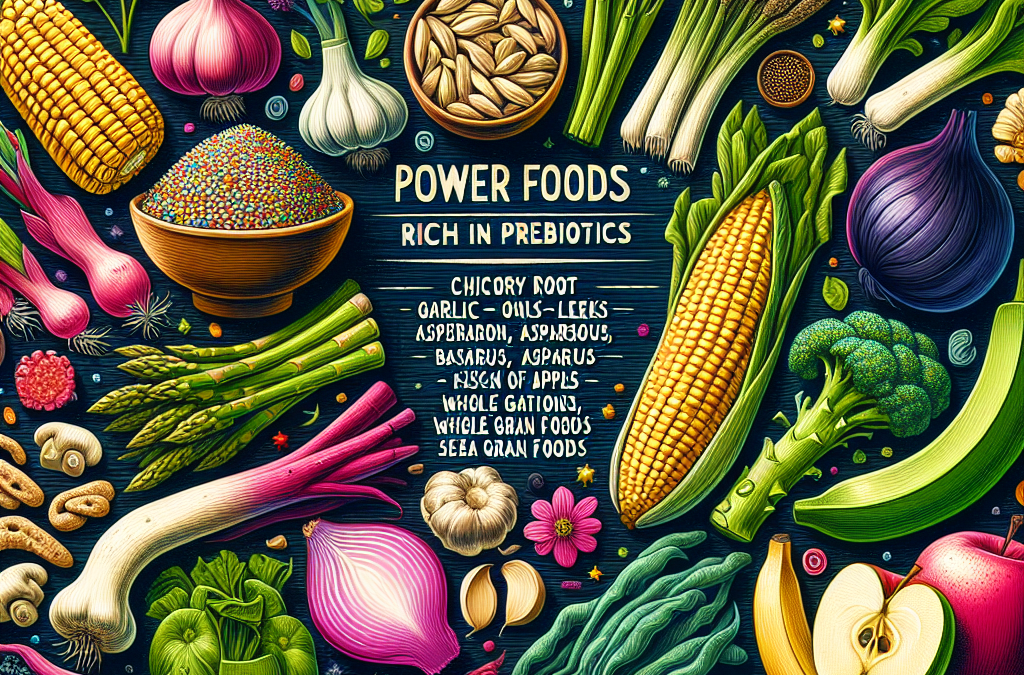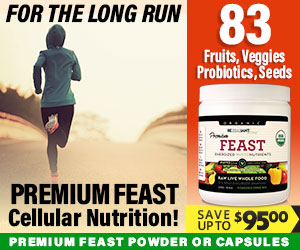Are You Missing Out on These Prebiotic Power Foods?
Have you ever wondered why your gut sometimes feels a little off? Well, let me tell you, prebiotics could be the answer to that annoying dilemma! In this article, I’ll share my own journey with these powerful foods and how they can improve your gut health. But first, let’s quickly dive into the top 4 semantic keyword phrases connected to prebiotic foods:
- Benefits of prebiotic foods
- Types of prebiotic foods
- How to add prebiotics to your diet
- Prebiotic foods vs. probiotics
Benefits of Prebiotic Foods
Gut Health Booster
So, let’s kick things off. One of the best things about prebiotic foods is how they work wonders for gut health. Think of prebiotics as food for the good bacteria in your gut. They help those tiny warriors thrive, making your digestion smoother than ever. Trust me, I’ve felt the difference!
When my gut is happy, I feel more energetic and even notice improvements in my skin clarity. It’s like a two-for-one deal! Plus, a healthy gut can boost your immune system, helping you fend off those pesky colds that tend to go around.
And the cherry on top? Some studies suggest that prebiotics can help reduce inflammation in the body. A happy gut can mean a happier you!
Mood Enhancer
You might not expect this, but did you know your gut influences your mood? Sounds wild, right? Prebiotics can help regulate the production of neurotransmitters like serotonin, which is often referred to as the “feel-good” hormone.
After adding these foods to my diet, I noticed an improvement in my mood swings. Instead of feeling down after a long day, I felt more balanced. Discovering this connection made me appreciate my prebiotic-packed meals even more!
So, the next time you’re feeling a bit low, instead of reaching for that sugary snack, try grabbing a prebiotic-rich snack instead. Your mood might just thank you!
Weight Management
We can’t ignore the fact that many of us are on the lookout for ways to maintain a healthy weight. Prebiotics can actually be your secret weapon! How, you ask? These foods promote satiety, making you feel fuller for longer.
I remember struggling with cravings during my work-from-home days, but incorporating high-fiber prebiotics into my meals helped curb those unnecessary snack attacks. It’s all about making smart choices!
Plus, a healthier weight contributes to overall health benefits, and we all love that! So, give your tummy some prebiotics and watch those cravings diminish!
Types of Prebiotic Foods
Common Prebiotic Foods
Now let’s talk about what kinds of foods we’re talking about here. Some of the common prebiotic foods include garlic, onions, bananas, and asparagus. Each of these brings a unique flavor and texture to your dishes—who doesn’t love that?
Personally, I love adding garlic to my stir-frys. Not only does it elevate the flavor, but it also gives me that gut health boost I’m always on the hunt for! Bananas have also become my go-to snack when I’m on the run.
Getting creative with these foods, I often mix bananas into my morning smoothie or combine asparagus with a delicious quinoa salad for lunch. Your gut will love you for it!
Less Common Finds
If you’re ready to step outside the box a bit, consider adding some less common prebiotics into your diet. Chicory root, dandelion greens, and leeks are fantastic options that not only pack a prebiotic punch but are also super tasty!
For instance, I’ve recently started using chicory root in my coffee for its rich flavor. It’s easy to add and makes a huge difference in my morning routine!
Leeks are another wonderful addition because they’re great for soups and stews. They may not be everyone’s first choice, but trust me, once you try them, you’ll be hooked!
Choosing the Right Sources
When selecting prebiotic foods, it’s essential to go for fresh, high-quality options. I always make it a point to shop at local farmer’s markets. Fresh produce not only tastes better but can also provide higher nutrient levels.
Also, keep an eye out for packaged products that might be marketed as prebiotic. Sometimes these can be loaded with sugar or unhealthy additives. Always check the nutrition labels; it’s worth the effort!
And remember, cooking methods matter too! Lightly steaming or roasting veggies retains more of their prebiotic power compared to boiling. It’s all about making the best choices for our gut!
How to Add Prebiotics to Your Diet
Start Small
One of the best pieces of advice I can give you? Start small! When I first introduced prebiotics into my diet, I began with just one or two foods a day. Maybe I’d add some sliced banana to my breakfast or include garlic in my favorite recipe.
This gradual approach made it easy and enjoyable rather than overwhelming! Nobody wants to feel like they’re forced to eat a mountain of new foods overnight.
Get an Amazing Discount on Best Organic SuperFood Product!
As I got comfortable, I began mixing and matching different prebiotic foods into my meals. It was fun to discover combinations that not only tasted good but made me feel great!
Experimenting with Recipes
Try becoming more adventurous in the kitchen! I realized that incorporating prebiotic foods didn’t have to mean sacrificing taste. There are tons of delicious recipes out there just waiting for you to discover!
For example, I’ve created a creamy garlic asparagus risotto that makes for the perfect comforting dinner while packing it with prebiotic goodness. It’s all about getting creative and having fun with food!
Cookbooks and online blogs can offer a treasure trove of inspiration. So get to searching and let your inner foodie shine!
Making It a Habit
Eventually, it’s all about making these foods a regular part of your routine. I’ve started keeping my prebiotic staples handy—always having a bunch of bananas or some garlic on hand ensures I’m ready to go!
Meal planning is another great way to make sure I’m including those gut-friendly foods throughout the week. I’ll take a few minutes on Sundays to map out my meals, integrating prebiotics into as many as possible.
Over time, it’ll become a rhythm in your life, one that’s delightful and beneficial for your health!
Prebiotic Foods vs. Probiotics
What’s the Difference?
This is a question I often hear: what’s the difference between prebiotics and probiotics? Here’s the scoop: prebiotics are like the food for the beneficial bacteria (probiotics) living in your gut.
While prebiotics help to feed those little critters, probiotics are the live bacteria themselves. They both play essential roles in our health and work better together!
Understanding this relationship made me appreciate both food groups on my plate. It’s like a little ecosystem working together in our bellies!
Choosing What’s Best for You
When it comes to gut health, I believe that a balanced approach is key. I often incorporate both prebiotic-rich foods and probiotics into my diet. It’s all about giving my gut a holistic boost!
You’ll find probiotics in foods like yogurt, kefir, and sauerkraut. Pairing these with your favorite prebiotics is a winning combo. Just think about it: garlic-laden quinoa topped with a side of probiotics-rich yogurt. Yum!
Ultimately, do what feels right for your body, and don’t hesitate to play around with different foods until you find what works best for you!
Tips for Gut Health
As a little bonus, I’d like to sprinkle in some gut health tips. Staying hydrated is a game-changer! Drinking enough water can support digestion and the overall health of your gut flora.
Also, manage your stress. I’ve found that practicing mindfulness and regular exercise can work wonders in supporting gut health. Just because it might not seem directly related doesn’t mean it doesn’t count!
And lastly, always listen to your body. If something doesn’t sit well with you, don’t hesitate to make a change. Your health journey is uniquely yours!
FAQ
1. What are prebiotic foods?
Prebiotic foods are non-digestible fibers that feed the beneficial bacteria in your gut, promoting a healthy digestive system.
2. How can I tell if I’m getting enough prebiotics?
If you’re regularly consuming foods like garlic, bananas, onions, and asparagus, you’re likely getting enough prebiotics. Pay attention to how your digestion feels as well!
3. Can I take prebiotic supplements instead of food?
While supplements can help, it’s best to get your nutrients from whole foods. They offer a wide range of health benefits beyond just prebiotics.
4. How quickly will I notice the benefits of prebiotics?
It can vary by person, but many people notice improvements in digestion and mood within days to weeks of consistently incorporating prebiotics into their diet.




